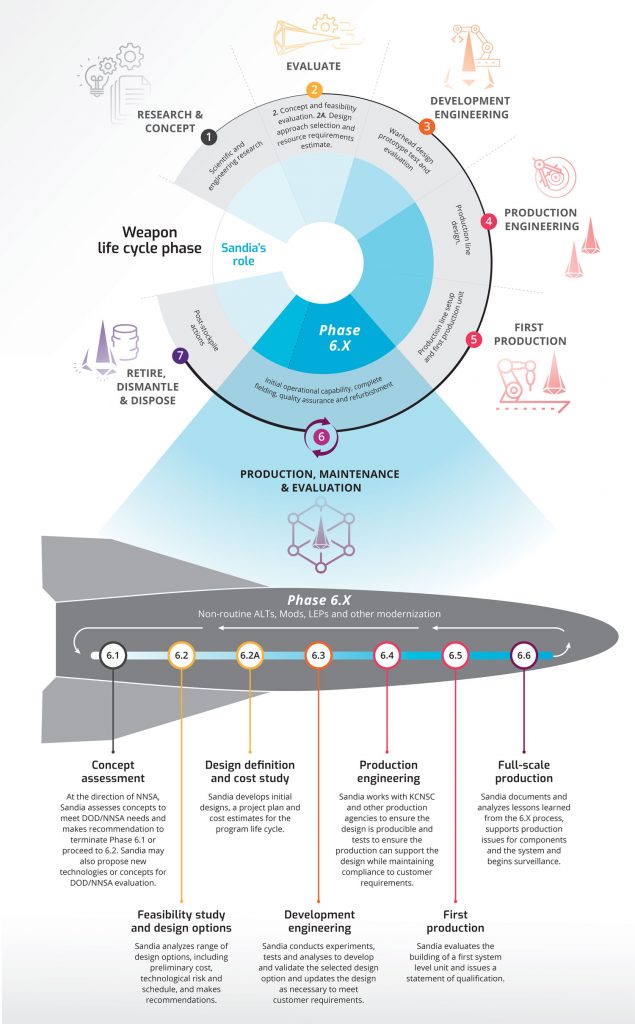As Labs Director James Peery calls upon staff to fill gaps in the nuclear deterrence program, education about Sandia’s role in national security is critical. While many Sandians work outside of the nuclear deterrence program, all the work that happens here has a connection to national security and Sandia’s key role in developing, producing and maintaining the nuclear stockpile.
Lab News worked with the nuclear deterrence program to illustrate the nuclear weapon life cycle. Each phase represents teams of talented staff members who are committed to their work and the mission. For more information about how to contribute expertise to the nuclear deterrence programs, visit the Nuclear Deterrence Modernization Efforts Rally Cry website.
Life cycle at a glance
Nuclear weapons are developed, produced and maintained in the stockpile, then retired and dismantled. This sequence of events is known as the nuclear weapons life cycle.
The Phase 6 Process was developed for routine maintenance, stockpile evaluation, enhanced surveillance and annual assessment. Since 1999, major stockpile sustainment activities have been guided by the Phase 6.X Process, developed for nonroutine nuclear weapon alterations, or ALTs, and modifications, or Mods, at the system, subsystem or component level; Life Extension Programs, or LEPs; and other warhead modernization activities.
The W93 program has been approved by the Nuclear Weapons Council to enter Phase 2 and is the first “clean sheet” nuclear weapon development program in nearly 40 years. It will follow the older process, illustrated at the top of the graphic.
